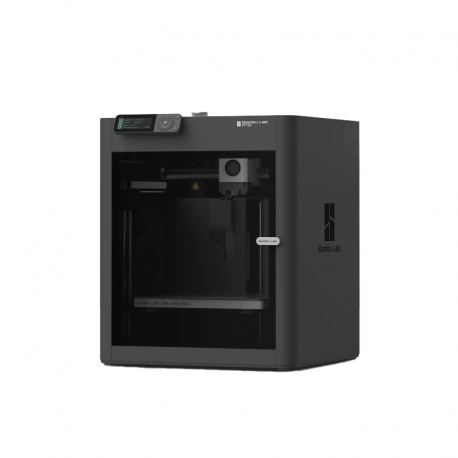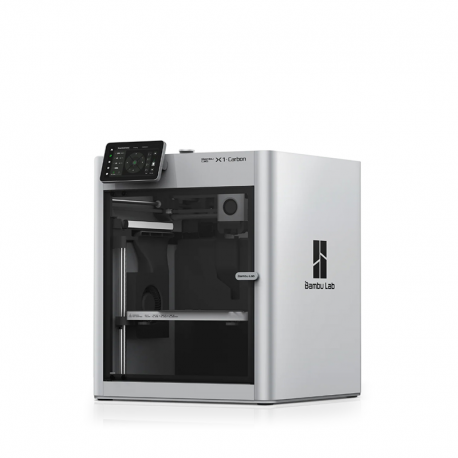
Which 3D Printer to Buy
Share
Which 3D Printer to Buy: Guide to choosing the best 3D printer
The 3D printing revolution is here to stay. It doesn't matter if we want it for creative projects, design prototypes or just for fun, having a 3D printer at home or in your workplace can open up a world of possibilities.
At Printatonic we know well that with an overwhelming variety of models on the market, the main question is: " Which 3D printer to buy? ".
In this guide, we'll break down the key factors you should consider when looking for the perfect 3D printer for your needs. From the type of prints you want to make to your budget and level of experience, we'll help you make an informed decision.
A blog is worth what its word is worth. Although some links are affiliate links, we only recommend printers that we like and think you might like. We will never recommend what we are not committed to.
At the end of the article we leave you our recommendations , so you can choose what best suits your needs.
1. Define your Objectives
The first step to choosing the right equipment is defining your goals. What kind of prints are you planning to make? Do you need high precision for industrial prototypes or are you more interested in home projects? Understanding your needs will guide you in choosing the type of printer.
Industrial printers have exorbitant prices for the conventional user, and the reality is that you can achieve very similar results with printers that are adapted to the consumer market, but if what you are looking for is the prototyping of industrial parts with minimum tolerances or you need advanced applications specific (such as the healthcare sector), you should aim for professional teams. In this sense, we are going to focus the shot on domestic or consumer 3D printers , since the industrial sector is so specific that it deserves its own article.
2. Type of Printing Technology
Printers use different technologies to create objects. The most commons are:
- Fused Deposition Modeling (FDM): Ideal for beginners, it uses fused plastic filaments and is versatile for a variety of applications. They are perhaps the best sellers and, although they do not offer the level of detail of resin printers (SLA), they are much less cumbersome to use than those.
- Stereolithography (SLA) : Offers high quality printing using liquid resin and a UV laser. Perfect for detailed projects and high precision models. The toxicity of the materials and post-processing is much higher than in the FDMs mentioned in the previous paragraph. In addition, they are almost always only suitable for printing smaller models, that is, their printing surface is smaller.
- Selective Laser Sintering (SLS) : Uses plastic, metal or ceramic powder, and is ideal for strong and durable parts. They are reserved for the industrial sector given their price, although the finish is by far the best. Its price usually starts at €10,000 and up.
3. Print Size and Platform
The size of the printing platform is essential. Do you need to print large or small objects? Make sure the printer has adequate space for your projects.
The manufacturer always specifies the dimensions. FDM printers typically range around 250mm x 250mm x 250mm , although some brands offer high-volume printers at affordable prices.
Resin or SLA printers typically have smaller print surfaces, around 145mm x 145mm x 175mm
4. Budget
To know which 3D printer to buy, you must define a clear budget and look for models that fit it. Don't forget to consider the cost of printing materials.
The cheapest printers are usually FDM type, although some brands offer quite affordable resin or SLA printers, such as the Creality brand.
Other more premium brands like Bambu Lab or Prusa are less affordable, but are much more reliable and print at much higher speeds. If you want to know more about the factors that determine printing speed, consult our specific article .
At Printatonic we recommend that you avoid extremely cheap printers, clones of other already quite cheap printers (like the Creality Ender 3). They can pose a serious fire risk given their lack of quality controls and cheap components.
5. Experience and Ease of Use
Are you a complete beginner or do you have experience in 3D printing? Some printers are more beginner-friendly , while others offer greater flexibility but require more technical knowledge.
Resin printers are by far the most complicated to use. These printers use liquid resin that subsequently solidifies into 3D printing parts. Given their liquid nature, they involve a much more complex process. In addition, these resins are toxic and give off an unpleasant odor. They also require post-processing consisting of curing the 3D printed part with UV rays.
Conventional FDM printers, unlike SLA, use solid materials to create 3D printed parts and do not require any complex or cumbersome post-processing .
Some printers are practically " Plug and Play ", self-calibrating and adjusting automatically. Printatonic will always recommend this type of printer if you don't like to experiment, although the beauty of this hobby is learning with it, and that will only be given to you by a printer that requires being assembled, adjusted and calibrated by the user. There is always time to make the jump to something more "comfortable" in the future.
6. Research and Compare
Once you have defined your needs, research and compare models. Read reviews, check forums and get user opinions. Compare features like printing speed, accuracy, and ease of maintenance.
Don't just trust what Printatonic tells you. Although we are experts in the field of 3D Printing, it is your responsibility as a smart consumer to compare the different models that exist on the market. If you have any questions you can always contact us, we will help you with whatever you need.
7. Customer Service and Warranty
Finally, make sure the manufacturer offers good customer service and a solid warranty. This will give you peace of mind in case of future problems.
Some 3D printer brands do not offer any type of warranty. If you still don't know which 3D printer to buy, keep in mind that a 3D printer is not comparable to a 2D printer.
3D printers recommended by Printatonic
Below we recommend some printers based on the above criteria (updated to 2023):
BEST CHEAP 3D PRINTERS
This is our selection of 3D printers with the best quality-price
- Creality Ender 3 V2 (€250)
- Creality Ender 3 (€200)
- (Resin) Creality CL-103L (€439)
BEST 3D PRINTERS
This is our selection of the best 3D printers, if what you are looking for is a reliable, robust and reliable printer.
- Prusa MK4 (€900 to €1000, depending on whether you want it assembled or in its kit version without pre-assembly)
- Prusa MK3+ (€700 to €900, depending on whether you want it assembled or in its kit version without pre-assembly)
- Bambu Lab X1 Carbon (€1,270)
In summary, if you want to know which 3D printer to buy, you should take into account it is an important decision that depends on your objectives, budget and level of experience. With this guide, you are ready to know which 3D printer to buy. Research, compare and choose wisely to unlock the full potential of 3D printing in your life. Start creating your own three-dimensional designs!
Contact us if you need a designer or if you want us to print an object for you :)








